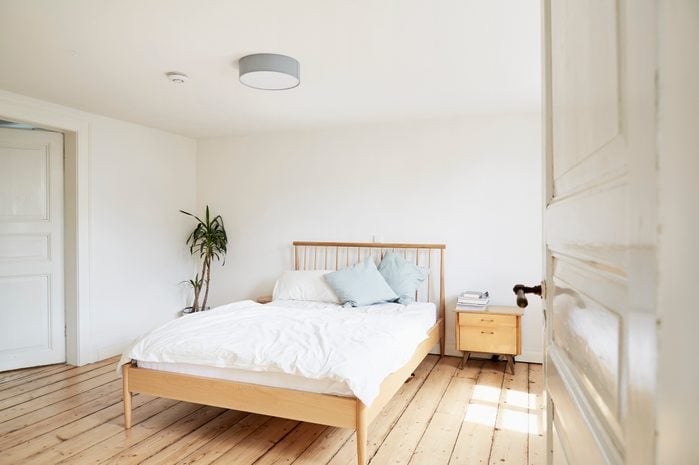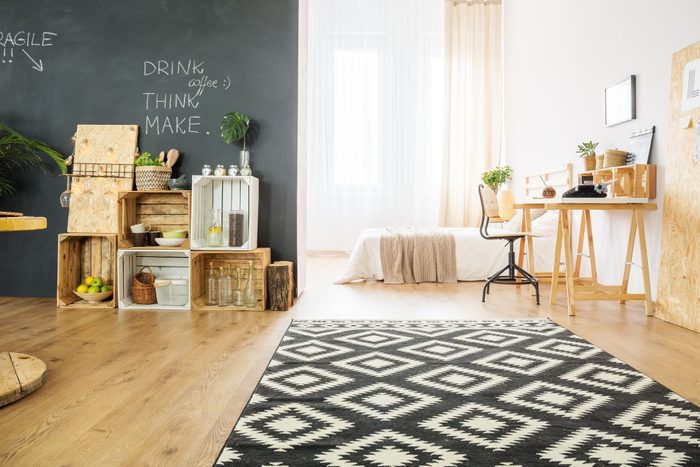
Studio
The studio is essentially a one-room apartment. The open floor plan includes a bedroom, living room and modern kitchen all rolled into one, while the bathroom is separated by a door.
Studio apartments can be 300 to 600 square feet, with those on the smaller side sometimes referred to as micro studio apartments. If there’s an alcove (aka a nook or niche) that separates the sleeping area from the rest of the space, it’s known as an alcove studio apartment.
Some studio apartments built in the upper floors of commercial buildings are known as loft apartments. Many have high ceilings and large windows.
Studios are suitable for a single person or a couple. But due to the lack of privacy, it wouldn’t suit unrelated renters living together.
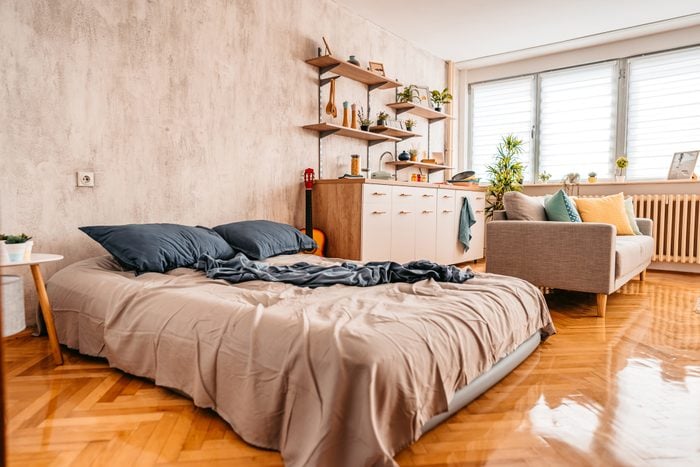
Efficiency Apartment
An efficiency apartment is a small studio — usually not much larger than 300 square feet — with some key distinguishing features.
Instead of a full kitchen, there’s often just a kitchenette with a small sink, stove and refrigerator, a few storage cabinets and limited counter space. There’s a separate bathroom, but the delineations between the kitchen, living and bedroom spaces are not as pronounced as in a full studio. Sometimes the kitchen cabinets create separation.
Efficiency apartments are most often found in high-density urban areas. They suit people with few personal belongings who live alone and tend to move frequently. If you paint your rental, will you lose your damage deposit? Here’s everything you need to know about apartment painting.
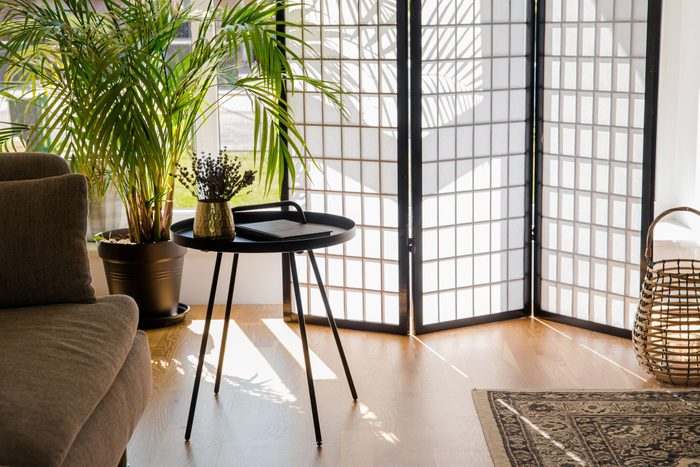
Flex or Convertible Apartment
These a non-permanent partition that increases the number of rooms for added privacy. Sometimes a bookshelf or curtain serves as the partition.
A convertible studio apartment can thus become a one-bedroom unit, and a convertible one-bedroom become a two-bedroom apartment. The trade-off is that each added room has less space, but the partition does provide privacy. A flex unit can be a good solution for an elderly or disabled person who lives alone but has caregivers or relatives who occasionally stay over.
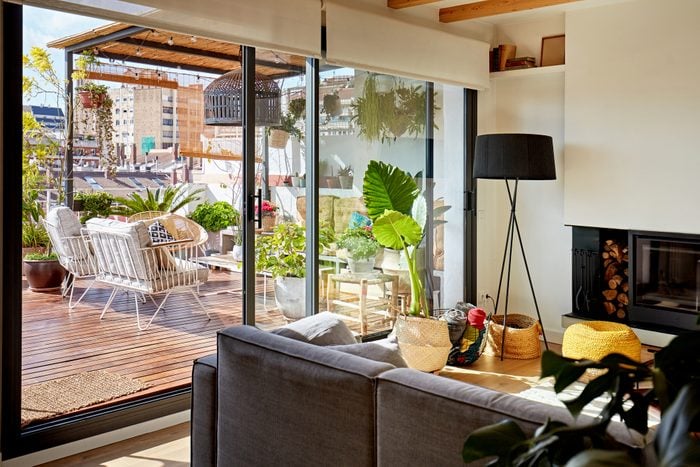
Garden Apartment
This is a basement or first-floor apartment with access to a private or shared garden space. It often has a sliding patio door that opens onto the garden.
The garden provides space to lounge in a natural setting and possibly grow your own flowers and vegetables. But it can create security issues if it’s unfenced and easily accessible. Garden apartments are also prone to problems with pests and moisture. So before renting one, do a walk-through and get as much information as possible from the landlord or rental agent.
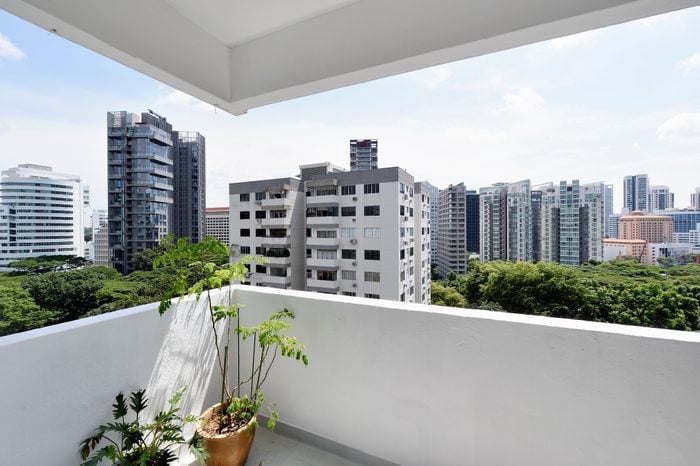
Low-Rise, Mid-Rise and High-Rise Apartments
Apartment buildings with multiple units can be low-rise (no more than four stories), mid-rise (five to 11 stories) or high-rise (12 stories or more). Mid- and high-rise apartment buildings often have centrally located elevators.
While some low-rise buildings have elevators, many don’t, forcing people on upper stories to use the stairs. When someone in New York City says they live in a “fourth-floor walk-up,” it means a low-rise with no elevator.
Mid- and high-rise apartment buildings are common in high-density urban areas. Individual units are usually well-appointed with one or more bedrooms. Some low-rise buildings are older and come with issues related to age, including high heating bills and noisy window-mounted air conditioners.
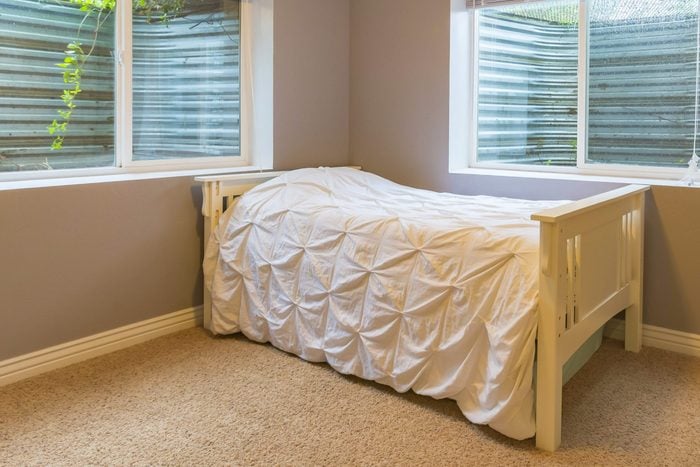
Basement Apartment
These sit below ground level, usually accessed by a stairway on the street or inside the building. Because it’s in the basement, smallish windows (some partially obscured by window wells) provide limited natural light.
You often find basement units in apartment complexes, but single-family homeowners also convert basements to apartments to rent out for extra income. Many basement apartments are well-insulated and comfortable, but some in old buildings have problems with moisture and noise.
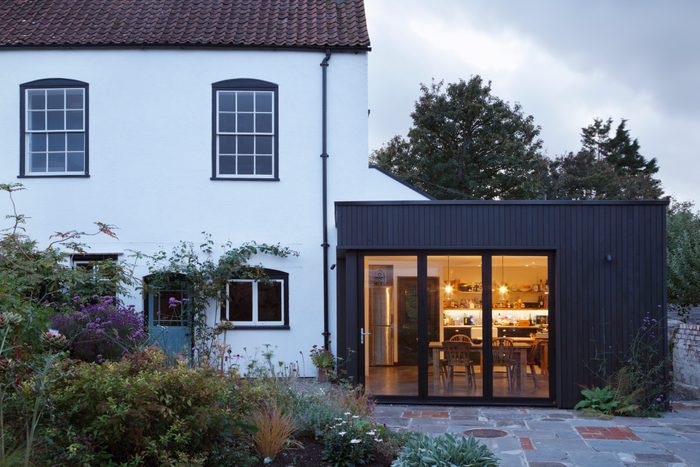
Additional Living Unit (ADU)
Also known as in-law units and granny flats, ADUs are fully-contained living spaces that may be added onto an existing house or constructed as detached units. A homeowner may build an ADU to accommodate a family member, then rent it out when the family member no longer needs the space. It may have a doorway leading to the main residence.
ADUs are becoming increasingly common in places like California, where the state government is relaxing zoning standards to encourage homeowners to build them to address a housing shortage. ADUs are often built on spacious properties where renters have full or partial access.
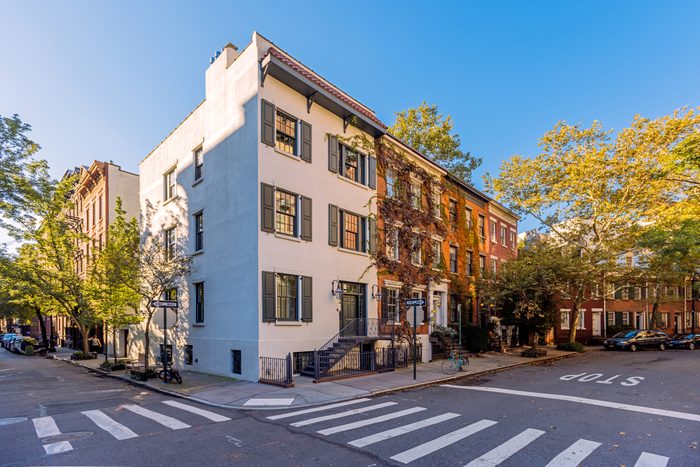
Co-Op Apartment
A co-operative housing development, or co-op, is jointly owned by the people who live there. When you move in, you become a part-owner and assume partial responsibility for the mortgage, utilities and maintenance for the entire complex.
The co-op usually has a governing body made up of tenants. Co-op rules and financial responsibilities are spelled out in an agreement established by that body. Co-ops may allow residents to sublet their units, but many don’t, and those that do usually establish strict guidelines.
Renting a co-op apartment can be economical. But it’s usually an involved process that includes an extended waiting period.
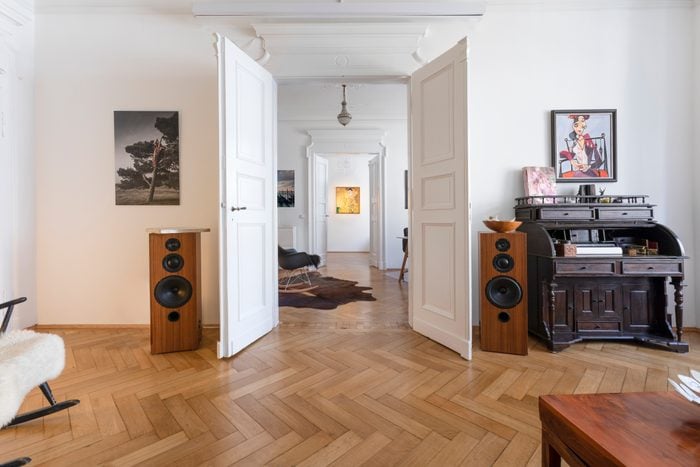
Railroad Apartment
Although it sounds like something out of the Wild West, a railroad apartment is so named because of the orientation of the rooms. There is no central hallway, and each room opens onto the next, so you have to walk through multiple rooms to traverse the apartment — similar to walking through a railway car.
These tend to be in old buildings in large cities like New York and Chicago. Many offer the old-world charm that comes with vintage woodwork and architecture. Because of the lack of privacy, however, they work better for families than unrelated roommates.
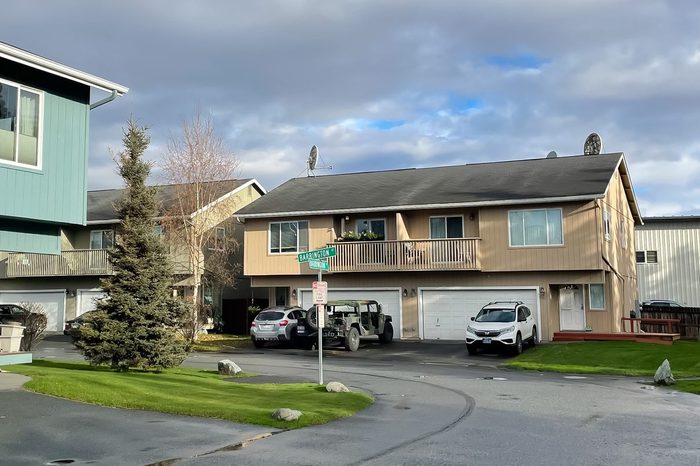
Duplex and Triplex
Common in San Francisco and other cities, duplexes and triplexes feature two or three individual units built into a single structure. Each has its own entrance from the street and a common wall with the unit next door. Duplexes and triplexes are the precursors to modern townhouses, and the buildings are often quite old.
Many of those in San Francisco are vintage Victorian structures dating to the late 1800s and early 1900s. They often have more than one story and as much living space as a fully detached house. They’re suitable for families and collections of individual renters who share the living space. Get to know the difference between an apartment and a house.

